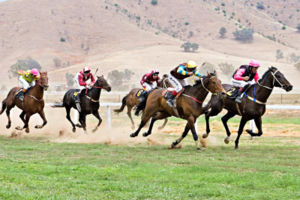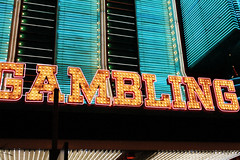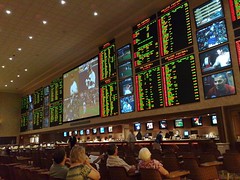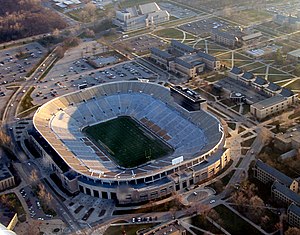Confused by the grading system?
Well you shouldn't be…
as a matter of fact it’s really simple.
There are six grades of greyhounds indicated by A, B, C, D, J and M (Maiden).
The winner of any race is advanced one grade until reaching A.
If a greyhound finishes fourth or worse in three consecutive official starts in the same grade OR fails to earn more
than one 3rd in four consecutive official starts in the same grade, that greyhound shall be lowered one grade.
(Exceptions in Grades D and J)
GRADE “J” FACTS
• Grade “J” is for greyhounds 30 months of age or younger.
• When a greyhound wins a Grade “M” race, it will advance to Grade “J”.
• When a greyhound wins a Grade “J” race, it will advance to Grade “D”, then to “C”, “B” and “A”.
• Greyhounds 30 months of age or younger who drop from Grade “D” will go to Grade “J”.
• Greyhounds who turn 31 months of age while in Grade “J” will be raised to Grade “D” and will be denoted in
the racing program with a (J).
• Grade “M” greyhounds 25 months of age or older will automatically be raised to Grade “J”, and will be labled in
the program with a (M).
GRADE OFF RULES
• Any greyhound who fails to finish at least fourth in eight consecutive official Grade “J” or Grade “M” starts shall
grade off.
• Any greyhound who fails to finish at least fourth in six consecutive official Grade “D” starts shall grade off,
unless the greyhound is young enough to compete in “J”.
Now I will introduce you to Racing & Mutuel Terms. Some will be similar to horse betting terms but I will go in depth with greyhounds because,they are much more exciting and hopefully after reading this information you will gain quick understanding and get ready to have some low cost fun with a chance of course to win some money.
Across the Board: A win, place and show wager on a particular greyhound.
Advance wagering: Wagers that are accepted on a race later during a performance or on a future performance.
AGC: American Greyhound Council Inc., a non-profit group jointly supported by American Greyhound Track Operators Association members and National Greyhound Association members, the purpose of which is to provide for the betterment of the welfare of racing greyhounds and the greyhound industry.
AGTOA: American Greyhound Track Operators Association, a non-profit corporation comprised of owners and operators of greyhound race tracks.
All-America Team: The eight top racing greyhounds selected each year by American Greyhound Track Operators Association.
Backstretch: A straightaway on the far side of the race track.
Bertillon Card: A greyhound's identification card that lists 56 physical identifying points for every registered racing greyhound.
Blanket: A covering for a greyhound bearing a number and color corresponding to its post position.
Box: The post position the greyhound will be racing from or the starting box itself. Also describes a wager involving the inclusion of a combination of greyhounds in a race.
Breeder: The individual who is the owner or lessee of his or her dam at the time of whelping.
Brindle: A streaky combination of colors, usually including a predominance of brown or tan.
Calls: The position of each greyhound at specific points around the track during a race.
Career record: A series of five numbers indicating, in order, a greyhound's total number of starts, followed by first place, second place, third place and fourth-place finishes. Often preceded by an abbreviation showing the track at which the starts were recorded.
Chart: A record of each race showing finish, calls, odds and comments describing each racer's performance.
Chartwriter: The person who compiles the charts and writes the comments on each greyhound's performance during a race.
Class: The grade of a race or a greyhound.
Collided: A comment used by the chartwriter to designate major contact between two or more dogs during a race.
Commingled pools: Money wagered at one track which goes into and mixes with wagering pool at another.
Daily Double: A wagering term describing the selection of the first place finishers on consecutive designated races. Dam: The mother of a greyhound.
Dead Heat: An exact tie between two or more greyhounds in a single race.
Doubleheader: Two race performances in the same day.
Draw: A random process by which each greyhound's starting position is determined.
Escape turn: The turn or curve at which the mechanical lure disappears after the race is over.
Fast track: A firm track on which the greyhound can achieve its best speed.
Flashy Sir Award: Given each year to the nation's top distance (3-8 mile) greyhound by the Greyhound Review ; named for an outstanding distance greyhound of the mid-1940's, now a Hall of Fame member.
Forced out: A chartwriter's term describing an instance of a greyhound being crowded to the outside by one or more opponents.
Grading system: Method of assuring greyhounds compete against racers of similar caliber; grades are assigned according to performance, with the top grade being "A". Some tracks use a grade AA.
Greyhound Hall of Fame: A museum and shrine to the greats of the sport. Located in Abilene, Kan.
Infield: Area surrounded by the oval track.
In the money: A first, second or third-place finish.
Interference: Intentional and unusual physical contact which obstructs or impedes the running of another greyhound as determined by the judges. After being called for interference, a greyhound must run in two schooling (non-wagering) races before racing in an official race.
ISW: Interstate Wagering. Wagering which takes place between tracks located across state lines.
ITW: Intertrack Wagering. Wagering between tracks located within the same state.
Judge: A racing official responsible for making decisions concerning photo finish results, eligibility and other racing matters.
Kennel: A business that cares for and races greyhounds under contract with one or more tracks.
Leadout: A handler, employed by the track, whose job includes parading racers in front of the public and placing them in the starting box before a race.
Length: The margin equal to the length of one greyhound. Used to denote how far ahead or behind each greyhound is during or after a race. Measuring speed, each length is computed to represent about 7/100ths of a second.
Lure: A mechanical device attached to an arm and electrically driven around the racing oval.
Lure operator: The person responsible for keeping the lure a uniform distance ahead of the greyhounds during a race.
Maiden: Any greyhound that has not won an official race and is less than 2 years old.
Matinee: A program of racing held during the afternoon hours.
Mutuel Handle: The amount of money wagered.
Muzzle: A wire, leather or plastic device, with a white tip, which is fitted over th greyhound's mouth and jaws and used to aid in photo finishes.
NGA: National Greyhound Association, made up of greyhound owners, breeders and trainers; recognized as a registry for racing greyhounds in the United States.
Nose: The slimmest margin of victory.
O.P. Smith: Owen Patrick Smith, inventor of a revolutionary mechanical lure, circa 1912, that could travel around a circular track; considered the "Father" of American greyhound racing.
Paddock: The area of lockout kennels, scales and inspection area.
Pari-Mutuel: Betting among ourselves. Type of wagering system at greyhound, thoroughbred, harness and jai alai facilities.
Place: A wagering term describing the greyhound finishing second in a race.
Post: A greyhound's post position or starting box number.
Post parade: The parading of the greyhounds before the race after they leave the paddock area. It includes the blanket and muzzle inspection.
Post Time: The starting time of the race.
Program: A printed guide to the day's races, including details such as the specifications and grades of individual races, post positions, past performances, charts, handicapper's selections, overnight entries, track records and other racing statistics.
Quiniela: A wagering term describing the two greyhounds finishing first and second in either order.
Racing Commission: A state or county regulatory agency that oversees all aspects of greyhound racing.
Racing Secretary: The track official whose major functions include determining how many races of each grade are to be run over each distance for any given performance and conducting the random draw for post position.
Rural Rube Award: Given each year to the nation's to sprint (5/16ths mile) greyhound by the Greyhound Review ; named for an outstanding sprinter of th late 1930's, now in the Hall of Fame.
Schooling Race: An unofficial training or qualifying race with no wagering allowed.
Scratch: Withdrawal of a greyhound from a race.
Separate Pools: Money wagered on a race at another track which is totally apart from the pool at the other track.
Show: A wagering term describing the greyhound finishing third in a race.
Sire: The father of a greyhound.
Sprint: A race run over five-sixteenths of a mile or shorter.
Stakes Race: A championship race or one for a purse larger than those offered for other feature races.
Starter: A greyhound becomes a starter for the race when the doors of the starting box open.
Superfecta: A wagering term describing the first four greyhounds crossing the finish line in a race.
Takeout: The money taken from the betting pool to be divided among the track, the state and the operators.
Tattoos: An identification number placed inside the ear of a registered racing greyhound.
Totalisator machine: A computerized system that records amounts wagered, prints tickets for bettors and calculates odds.
Tote board: A board which displays odds and payoffs.
Trainer: A kennel employee whose responsibility is preparing greyhounds for racing and caring for them at all times.
Trifecta: A wagering term describing the first three greyhounds crossing the finish line in exact order.
WGRF: World Greyhound Racing Federation, the worldwide promotion association for the sport.
Whelping: The act of birth.
Wheel: A wagering term describing the selection of a greyhound to win, place or show combined with every other greyhound in the race.
Win: A wagering term describing the first greyhound across the finish line.
Winner's circle: Where the winning greyhound proceeds following the race, often to participate in a ceremonial presentation.
Wire: The finish line for the race.



































